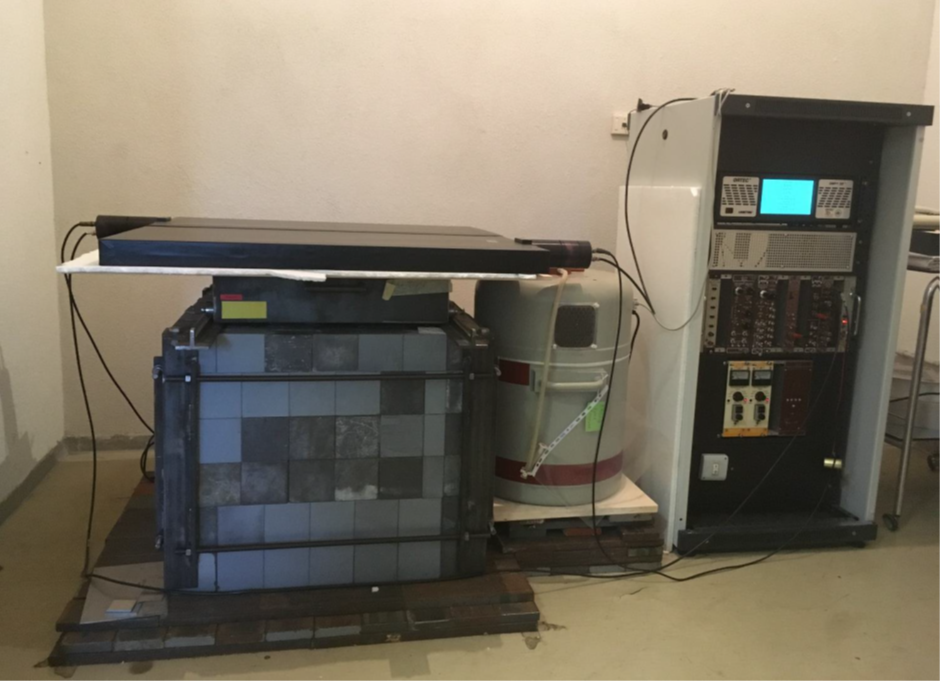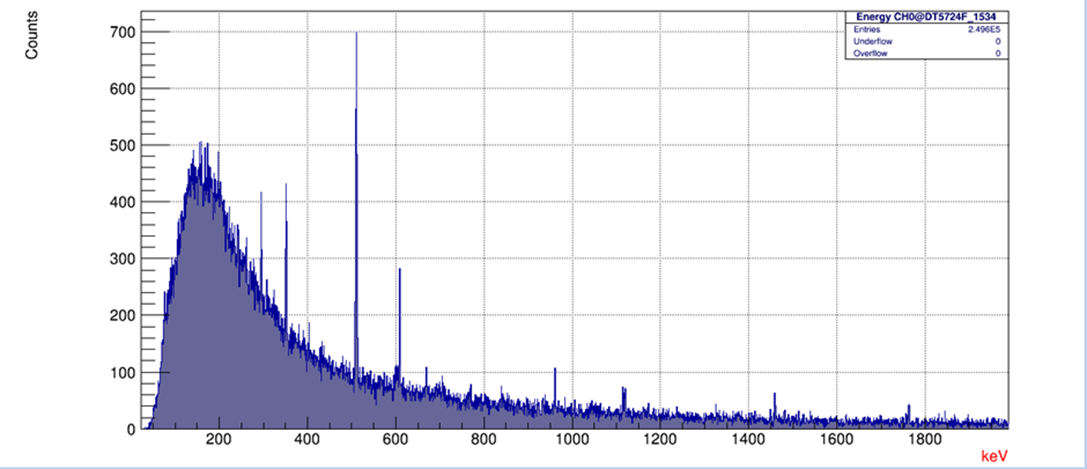Noble gas sampling in air and subsurface using ultra low background high purity germanium

The analysis and assessment of the concentrations of radioactive noble gases in the atmosphere and in the geosphere is becoming increasingly interesting for the study of some problems concerning the use of nuclear energy, both for industrial purposes (production of electrical energy, storage depots for radioactive waste), medical purpose (production of radiopharmaceuticals) and military (atomic tests). Radioactive isotopes of xenon represent a significant indicator of nuclear production as the natural background of these isotopes is lower than that of stable isotopes.
For this reason, the Traceability Laboratory (FSN-SICNUC-TNMT) of Brasimone has optimized an anticoincidence gamma spectrometry system for the detection of radioactive noble gases, in particular xenon isotopes such as Xe-131m, Xe-133, Xe-133m and Xe-135, which are of particular interest to the Comprehensive Nuclear Test-Ban Treaty Organization (CTBTO).
The system is based on sampling of the external air, filtering it, drying it, and passing it through an activated carbon column maintained at a cryogenic temperature to allow the adsorption of the xenon. The column is then heated to allow the extraction of the gas and the measurement of the volume of xenon by a gas chromatograph equipped with a thermal conductivity detector. At the end of this phase, the Al container with the radioxenon is subjected to analysis by high resolution gamma spectroscopy using a p-type hyperpure germanium detector (HPGe GX6020), with relative efficiency of 60% and FWHM of 1.95 keV in correspondence of the gamma ray of Co-60 of energy equal to 1332 keV. The detector is surrounded by an electrolytic copper and antique lead screen, 3.5 cm and 15 cm thick respectively. The signals produced by the interaction of cosmic rays that manage to cross the shielding are the main cause of the increase in the detector's background. For this reason, an anticoincidence system has been developed through the use of two plastic scintillators, placed above the shield of the HPGe detector, which send the pulses they record inside a gate placed in the germanium multichannel analyzer: when the signal arrives from the scintillator, the gate blocks the data acquisition to avoid recording pulses generated by cosmic radiation.

Antonietta Rizzo
ENEA
antonietta.rizzo@enea.it
Chiara Telloli
ENEA
chiara.telloli@enea.it